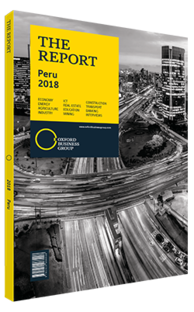Jorge Yzusqui, General Manager, Innova Schools : Interview

Jorge Yzusqui : Interview
How effective are the government’s efforts to enhance the quality of Peruvian schools?
JORGE YZUSQUI: This is a complex matter. Peru has more than 12,000 private schools with the quality of around 75% up for review. This is the result of a prolonged period of time during which schools were created without much state oversight and in some cases were opened without obtaining the required permits. This is something that has happened at all levels of the education system.
The current administration is currently tackling this issue by tightening their control on schools, with the goal of closing down those that fail to meet quality requirements – among other measures. However, the government’s actions are limited in the short to medium term by the fact that there is also a shortage of schools that meet the criteria with these needing to absorb students from any schools that are closed.
Furthermore, it is important to end the narrative that separates public from private education. Education is a single concept, and it is the responsibility of all stakeholders involved to improve the quality of education in Peru. In order to achieve this, it is essential to remove the ideological component when analysing the current state and future of education. The debate is often centred around the need to enhance control over private schools, while not focusing on the need to improve public schools. Both models of education should undergo the same level of scrutiny.
What can be done to make quality private education available at an affordable cost?
YZUSQUI: The key is to foster determination in the face of challenges. The biggest barrier to innovation in the education system are previously established paradigms. In Peru, the educational community had conceptualised quality education and innovation as impossible to achieve at a reasonable price.
This is why it is now necessary to convince parents, teachers, government institutions and financiers that a different model for education in Peru is possible. The key to the success of an educational model is to put the student, innovation, critical thinking and research at its core, rather than simply repetition and memory. This is what will allow a model to be successful and scalable to a large degree.
How are changes in teaching methodology shaping and improving the Peruvian education system?
YZUSQUI: Reforming the system does not necessarily entail reforming the curricula being taught. The curriculum is not important if the methodology is not effective, if teachers fail to capture the attention of students, or if there is a lack of pedagogical strategies. Any reform should be centred around these factors.
In regards to methodology, one of the most important aspects is to foster better connections with students. Blended learning methodologies, where 70% of the learning is done in groups and the remaining 30% is done individually are proving effective. During group learning, the student becomes the focus of the learning process, while the teacher acts as a guide. In this process, inquiry is the basis for knowledge-building.
All classes are divided into three stages: motivation, construction and end. During the motivation stage, students are asked questions to force them to think outside the box. This enables the teacher to capture their attention and is preceded by the construction stage, in which the group of students are divided into roles, where they work on leadership, team building and other soft skills. Then, during the individual phase of learning, students have access to platforms to study English, maths or chemistry at their own pace.
Under this model of education, the technology that is available to both teachers and students plays a key role. This includes systems for teacher development, a system for teaching accompaniment, performance analysis tools that allow schools to monitor teachers and knowledge evaluation programmes, among others.
You have reached the limit of premium articles you can view for free.
Choose from the options below to purchase print or digital editions of our Reports. You can also purchase a website subscription giving you unlimited access to all of our Reports online for 12 months.
If you have already purchased this Report or have a website subscription, please login to continue.

